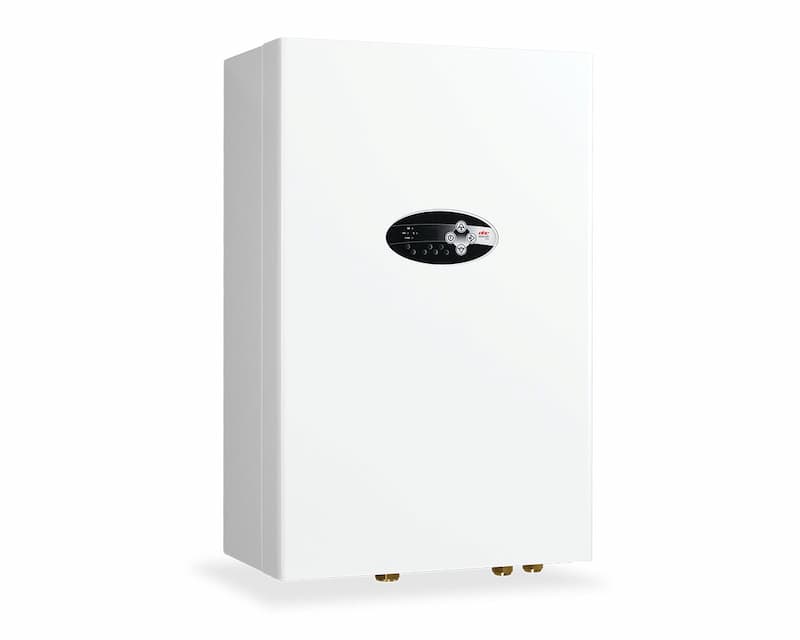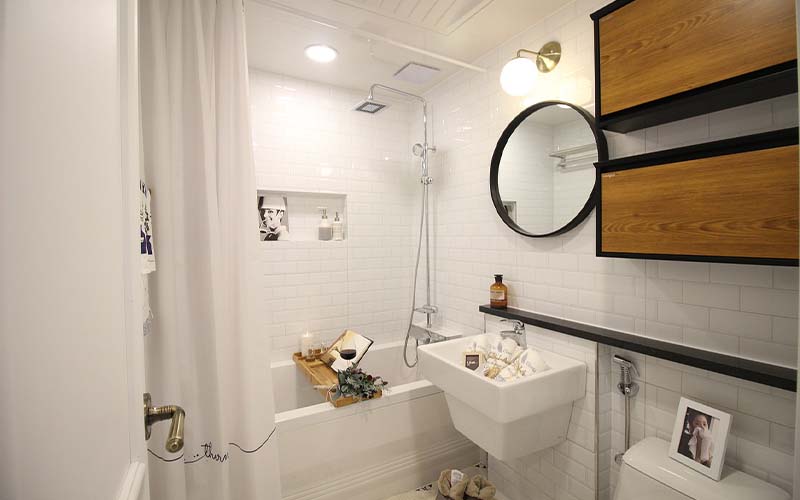Water heater not working? Follow these troubleshooting tips to restore the heat as quickly as possible, if you have no hot water for your shower, washing machine, or dishwasher.
Generally, there’s no hot water because of Gas Leak, Leaking Water Heater Tank, Gas Valve Failure, Thermostat Malfunction, Faulty Heating Element, Water Heater Tank Size, Pilot Light is Out, Electric Water Heater Malfunction, and Local Weather Forecast.
Nobody wants to be without hot water, especially when the weather is chilly! To be sure it’s not just a minor issue that you can fix yourself, though, it’s worth checking before you call an engineer.
To assist you in resolving minor problems and determining when you should really seek professional assistance, we’ve created a helpful checklist.
Why No More Hot Water?
If you can’t find hot water for your shower, washing machine, or dishwasher, here are 9 potential reasons no hot water in your house
Gas Leak
Your home’s lack of hot water could become a permanent fixture if a gas line leak occurs. Before calling a plumber or making repairs with common household tools on gas water heaters, it’s crucial to check all connections for leaks. This procedure should involve closing the main valve, allowing the faucets to drip, and checking all pipes for moisture or any strange odor coming from the gas supply.
It could be very dangerous if anything fishy with your gas supply is discovered. If you notice a “rotten egg” gas smell in your home, you might have a line leak. Here’s what you should do:
- Wait until you are a safe distance away from the suspected leak source before attempting to use your phone.
- Turn off the gas valves at your residence.
- Stoves and other household electrical appliances shouldn’t be turned on or off.
- Avoid smoking and using lit matches.
- Once you’ve moved a safe distance from your home, dial the police and the utility company.
- Make a call to the gas utility right away.
- Avoid attempting to fix the line.
Leaking Water Heater Tank
Not intended to leak, water heater tanks. In order for a water heater to work, the tank needs to be filled with water. You most likely have a leaking tank if there is no hot water and water is visible on the ground around the hot water tank’s base.
Empty tanks are extremely dangerous and inefficient in terms of energy use. Check the connections, valves, and pipes of the appliance. Verify the tank’s compartment to see if they’re locked up.
There’s a good chance that your machine needs to be replaced if there is water in the compartment.

Gas Valve Failure
Similar to how a furnace warms the air, the inside of gas-powered hot water tanks is heated by burning incoming natural gas. A malfunctioning or damaged gas valve may be to blame for the lukewarm water if the tank only uses a small amount of gas to heat the water.
It’s important to remember that rotten egg or garbage smells are indicators of a leaking gas valve, and that replacing a gas valve requires expertise. There needs to be a quick fix. Call the neighborhood gas company as soon as the gas has been turned off, then leave the house until it is deemed safe to come back. While gas leaks can result in fires and explosions, they can also be breathed in. Gas providers use an additive to produce the rotten egg aroma in order to detect leaks despite the fact that natural gas is completely odorless and invisible.
Thermostat Malfunction
The thermostat on a water heater should be set between 122 and 140 degrees Fahrenheit in order to produce heated water while being energy-efficient. If there is no hot water or the supply is insufficient or too hot, check the upper thermostat.
The thermostat needs to be replaced if it is damaged. Even if the thermostat is set properly, a lack of routine maintenance can cause issues due to sediment buildup. Drain and clean your water heater to get rid of this.
One of the most frequent causes of no longer having hot water in your house is a high-temperature cutoff switch that has tripped. Flipping the switch and pressing a button will fix it.
When you press the reset button, the water heater should make a clicking noise before power comes back on. If the high-temperature cutoff is defective and needs to be replaced, it’s likely because the electricity hasn’t been turned back on.
Faulty Heating Element
At the bottom of the hot water heater, there may be one or more heating elements used to heat the water. These components’ ability to heat water is diminished by sediment cover. After years of continuous use, heating elements can suffer damage and lose efficiency even without sediment buildup.
The water will be lukewarm throughout the house if the heating element in the hot water heater malfunctions. By getting in touch with a plumber or hot water heater technician, you can bring hot water back into your house.
Water Heater Tank Size
Your home won’t be energy efficient and will quickly run out of hot water if your tank is too small. When it was just the two of you and your spouse, the device may have been effective. However, as your family grew, there was a greater demand for hot water and a lot more hot baths. It would seem from this that your hot water tank needs to be increased in size.
Undoubtedly, an electric water heater requires more time to heat up than a gas water heater. If so, you will require a larger non-heated storage unit, which should address the issue of no hot showers when no one is home.
Pilot Light is Out
Your water heater’s pilot light might be out if the hot water faucet has turned cold. A no-heat storage unit or a no-hot-water heating system may not have enough gas pressure to produce any no-heat water temperature if no one turns it on until a predetermined temperature threshold has been reached, which could take hours to reach. The pilot light usually went out before this happened, and there are usually warning signs.
The majority of contemporary heaters no longer have pilot lights, but you should be aware that they now have glow plugs or spark ignitors in their place. If this applies to you, you might need to seek professional assistance or attempt to fix it yourself by consulting the owner’s manual.
If your water heater has a pilot light, look to see if the burner has any stains. Try this simple method if you’re unable to find any!
- Turn the regulator off and leave it off for at least five minutes while you wait for the gas to go away. Afterward, move your regulator to “pilot” mode.
- If your water heater has a self-ignition feature, you should hold down the ignition knob for at least 60 seconds. After that, change the setting on your regulator to “on.”
- All you need is a long lighter if you need to relight the pilot. Turn on the lighter while holding it over the tube supplying your gas. Your pilot light should be relit using this method.
The gas inlet valve may be open, though, if the pilot light doesn’t light. If it isn’t, turn the handle on the gas inlet valve until it is parallel to the gas line. Before attempting to relight your pilot, give the gas time to enter.
Electric Water Heater Malfunction
You won’t have to worry about waking up to cold water in your home if you use gas or electric water heaters. The electric version is obviously powered by electricity, usually from a separate circuit. Instead of a water heater problem, you might have an electrical problem.
A second way to test this idea is to use an electric device with an internal battery backup system in place of the main energy source, which is provided by wall outlets. There is no electricity flowing to your electric water heater if switching power sources does not turn on any heated taps.
Finding any loose connections to the water heater and resetting any circuit breaker box fuses that may have tripped as a result of the lack of hot water are two common solutions to the problem. If the breaker tripped, warm water will start flowing through your home again in about an hour. A circuit breaker that keeps tripping indicates a bad signal, so press the reset button. Contact a certified electrician if the problem persists.
Local Weather Forecast
The outside temperature affects how long it takes to heat water. Water heater tank energy efficiency and performance may be affected in the winter, even in relatively warm regions like the Southwest. Your system might be impacted, leading to water problems, if you live in an area where temperatures drop dramatically. In order to properly insulate the tank, you might have to endure the cold.

Does the Boiler Need a Reset?
Some boilers need to be reset from time to time for a variety of reasons, not all of which are serious. Decide where your reset button is and attempt to reset it in accordance with the manufacturer’s instructions. You’ll need a Gas Safe engineer to reset the boiler if the reset button is inside the boiler’s casing. Check for How Does a Boiler Work?
How Do You Reset Your Hot Water Heater?
You might have to relight the pilot light on your gas hot water heater. If there is a reset button on an electric hot water heater, press it. Alternatively, unplug the water heater for a short period of time, then plug it back in. Reset the breaker connected to the hot water heater if that doesn’t work.
Does Turning It Off and on Again Help?
If you’ve tried everything listed above and your faucets are still not producing hot water, try briefly turning off the boiler’s main power source before turning it back on.
Could You Have a Frozen Pipe?
If it’s extremely cold outside, the condensate pipe of your boiler may have frozen. You could try to defrost it with a hot water bottle or some hot, but not boiling, water.
How Long Does It Take for a Water Heater to Recover?
Whether it is a gas or electric model, a water heater recovers in a different amount of time. An electrical water heater recovers in half the time of a gas water heater. A 40-gallon electric water heater recovers in about two hours. For a 40 gallon electric water heater, the recovery process takes about four hours, compared to about two hours for a 40 gallon gas water heater.
Avoid using any hot water while you’re recovering because that will give you hot water faster. If you don’t use hot water while the tank is refilling, you are allowing your heater to continue to fill and heat the water.
If you draw water while the recovery process is underway, you’ll be adding cold water to your tank. This will only increase the time it takes for your water heater to recover completely and start supplying hot water once more. If you draw water too soon, it might only be warm or you might only have a short period of hot water before it cools off again.
Final Thoughts
It is unpleasant to run out of hot water while taking a shower or cleaning up after dinner. Fortunately, if you follow a few tried-and-true steps, you’ll either encounter this issue infrequently or be able to address it quickly when it does. In order to feel the warmth again, start by making sure you have the ideal hot water heater for your requirements. Then, keep that heater well-maintained. If anything goes wrong despite this.
FAQs
What Should I Check First When There’s No Hot Water?
Make sure your water heater’s thermostat is set properly first. Ideally, the temperature of the water in your hot water heater is set to be between 122 and 140 degrees.
What Causes Hot Water to Stop Working During a Storm?
You might need to increase the heat setting on your hot water heater if temperatures drop as a result of a winter storm. Assure a continuous supply of gas and electricity.
What is the Most Reliable Type of Water Heater?
Tankless water heaters are regarded by many customers as the most dependable ones. The moving parts in these water heaters are less likely to break down over time because they are only activated when hot water is required, as opposed to continuously as with storage tank water heaters.



